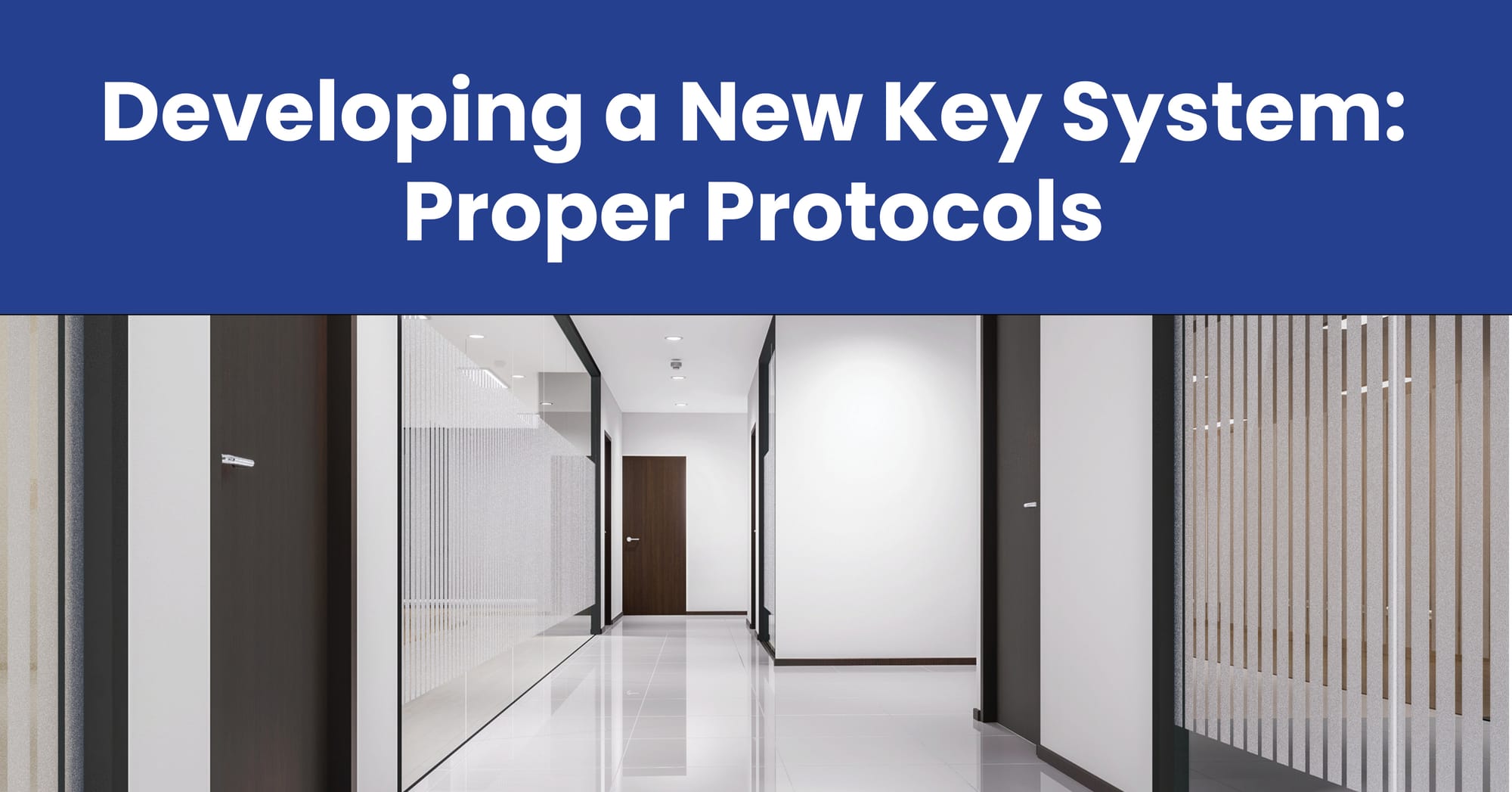Deploying a New Key System: Proper Protocols

Deploying a new key system can be a daunting and nerve-wracking task. Many months of preparation, lots of money invested, people and material assets to keep safe, lots of input from lots of people. Without proper preparation and consideration, things can go sideways very quickly.
To help you avoid errors and omissions that can doom a key system before it ever gets installed in a single door, Medeco has put together a handy guide, “How to Deploy a Key System the Right Way.”
It will serve you well to read this document from cover to cover. However, below are the highlights.
Follow the five steps below, the five Ds, to ensure efficiency and success during your next deployment.
Step 1 – Discovery
This step is the foundation. Just like building a house, things can crumble if the system is built on a weak foundation. “…you must deepen your understanding of your customer’s design needs through collaborative discussions.”
Recommendations at this stage include holding a strategy workshop, establish a team of essential personnel who can clearly define security needs and weaknesses, and collect as much information as humanly possible (even if it may not seem relevant in the moment).
This is the time to establish the scope of the work, set hard deadlines, discuss the expected lifecycle of the system, understand the customer’s resources, and understand risks.
Step 2 – Design
Now that the foundation is set, it’s time to move to the next phase, the Design.
The four crucial objectives during design are:
1. A survey of all openings
2. Design the master ket system
3. Consider customization options
4. Develop the plan to actually get the system installed
Step 3 – Development
One of the most overlooked components of deploying a new key system is the development of an organizational key control policy. This is not a fly-by-the-seat-of-your-pants moment. This is the time when the long-term integrity of your new system will be a success or failure.
Other key aspects of this stage include executing a key control agreement, which establishes patent protection from illegal key duplication. With this agreement comes legal recourse any time there is a violation.
Step 4 – Deployment
You’re finally there! The new key system goes in. All the foundational set-up pays off in this step. As you place the order for product, be sure to have a deployment plan, which should include a proper staging area. As the product arrives, test it and conduct regular audits during the actual installation to ensure there is no loss or waste.
A huge tip in this stage: double and triple check your order. Be sure the order is placed exactly as needed and intended. Any failure here will delay the project, costing money and confidence.
Step 5 – Dialogue
The new key system is installed and users are safely and securely accessing openings. Your work here is done and it’s time to forget this project and move to the next. WRONG!!
The work is never done. Continual assurance that the previously developed key control policy is being adhered to is crucial for long-term integrity. Ensure there’s a process for key cutting and servicing.
A great option at this stage is getting SimpleK up and running to help manage and maintain the new key system.
If you have a need for a new key system, please reach out to Medeco so we can help at every step of the process. Feel free to give us a call to get started. 866.633.3261.